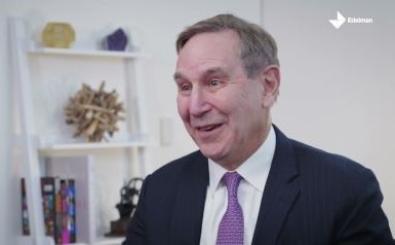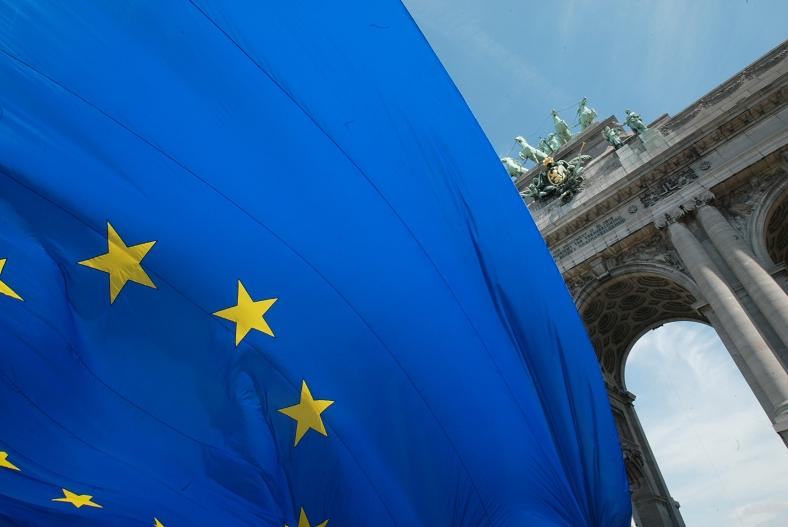This is part of an ongoing series on Europe's Year of Change.
Yesterday May 28th, the EU’s heads of states and governments met in Brussels over dinner to assess the results of the elections and kick-off negotiations to distribute key posts.
On last night’s menu: difficult discussions on the presidencies of the European Commission, the European Parliament (EP), the European Council, the European Central Bank (ECB), and the EU’s High Representative for Foreign Affairs.
Appetizer: the EU elections
Only 48 hours earlier, Europeans voted in one of the most surprising elections in decades, which saw Europe’s two main political groups, the centre-right EPP and centre-left S&D, lose quite some seats; while the Liberals (ALDE) and the Greens made significant gains, and the populist, Eurosceptic, anti-immigrant and nationalist parties won nearly a third of the seats – although less than expected.
The results were undoubtedly the starting point of the dinner conversation at yesterday’s Council informal meeting. After the EU elections appetizer, the menu’s main dish was the Spitzenkandidaten process, which was not the favourite dish of some leaders.
Main dish: the Spitzenkandidaten
Among Europe’s nine liberal-leaning leaders, France’s Emmanuel Macron and Finland’s PM Juha Sipilä distinguished themselves as the strongest voices against the Spitzenkandidaten process. Not only does the process essentially rule out a non-EPP Commission President, but it is also not explicitly outlined in the treaties, which simply stipulate that the “European Council, acting by a qualified majority” shall “tak[e] into account the elections to the European Parliament” and “[hold] the appropriate consultations” before proposing a Commission President candidate to the European Parliament, to be ”elected…by a majority”. So, in a nutshell: the European Council proposes, and the European Parliament elects.
However, with the increased political fragmentation in the Parliament, it is more difficult for a non-consensual candidate to be chosen. Given Parliament’s support for the Spitzenkandidaten process, the Council – where S&D and ALDE hold a combined 15 seats, and the EPP only 8 – has the best chance of replacing Weber with another candidate. But if not Weber, then who?
The European Tightrope Council
Just like when preparing the menu for a dinner with many different invitees and very diverse tastes, choosing the leaders of the EU is a tightrope walking exercise which entails a complicated game of differing criteria, including:
- Geographic balance: not all positions can be monopolised by large Western European members. Those who entered the EU after 2004 also need to get something. Five years ago, they were awarded with Council President Donald Tusk – but what about this year? Lithuanian President Dalia Grybauskaitė could fit the bill, being from a small country and a woman, which brings us to the next criteria.
- Gender balance: in an increasingly gender-aware Europe, the need for increased parity in top jobs is a must. Juncker received criticism in 2014 for allegedly struggling to find suitable female candidates. Yet Competition Commissioner Margrethe “Iron Lady” Vestager ended up being this Commission’s most popular figure. As the most popular candidate for the job, from the slightly underrepresented Nordic region, Vestager would fit the bill. She also belongs to ALDE, a party which has not held the Commission Presidency in over 40 years.
- Political balance: The EPP and S&D can no longer simply split key roles amongst themselves. Considering the results of the European Parliament elections, the cake will now need to be shared with others, such as ALDE. Monday’s tête-à-tête between Macron and Spain’s PM Pedro Sánchez, (who after winning the EU elections is the de facto leader of the S&D family) is a clear sign that both leaders may be looking to build an alliance to stop the EPP’s lead candidate, Manfred Weber.
Now, does that mean that Vestager is their candidate? Not necessarily. Let’s not forget that in this new coalition, ALDE would remain the junior partner – especially since they will lose the British liberal seats after Brexit. It therefore feels unlikely that the S&D group would agree to giving the top job to ALDE, when they have the chance of placing their own Frans Timmermans in the position.
A thread on who might get the biggest job in Brussels: the European Commission presidency. In 2014 a "Spitzenkandidat" system was introduced whereby "lead candidate" of biggest group - this time Manfred Weber of the centre-right EPP (pictured, in cardboard form) - gets the job. pic.twitter.com/zs4tgZgkQN
— Jeremy Cliffe (@JeremyCliffe) May 27, 2019
A full range of desserts and digestifs
After a heavy course of Spitzenkandidaten, it is time for desserts and digestifs: the EU’s other key posts. A decision on Commission President will have an effect on other crucial appointments. In 2014, the puzzle was solved by placing an EPP leader from a small country (Juncker) as Commission President; a female S&D representative from a southern country (Mogherini) as High Representative; an EPP leader from the Eastern bloc as Council President (Tusk); and an S&D representative from Germany as Parliament President (Schulz). You had geographical and political balance, and a woman in a key position. Today, the equation also includes the ECB President. So, which options exist?
- Ideally, for the Council Presidency, the candidate should be a former head of state or government, as well as a consensus builder. Dutch PM Mark Rutte (small northern European country and ALDE member) is a lead candidate alongside the aforementioned Grybauskaitė (small eastern European country and a woman). Perhaps unexpected, Angela Merkel also remains a dark horse candidate for Council President, as her successor Annegret Kramp-Karrenbauer seems keen on prematurely retiring her mentor to Brussels.
- The European Parliament presidency could be used a consolation prize for Weber in case his Commission President candidacy is rejected – although this will be decided by the Parliament. As an MEP, his promotion to Parliament President would seem natural, instead of being seemingly parachuted into the Commission.
- The High Representative for Foreign Affairs is a role that carries prestige and reputation despite its limited power. Spain, which has recently been criticized for punching below its weight, may seek to push for the position to be filled by its foreign affairs minister and former EP President, Josep Borell (S&D representative from a big southern country).
- And last but not least, the ECB presidency. It is an odd one. Given the position’s less political, more technical profile, the selection process features the direct participation of finance ministers. Held by Italian Mario Draghi until October, “Super Mario” is considered the man who saved Europe in the darkest hour of the euro crisis. His successor will have to fill very big shoes. Now, should Germany give up Weber’s bid as Commission President, German Bundesbank President Jens Weidmann as ECB President could offer a compensation of sorts.
Yet many questions remain: will the Greens get a top job? What happens to the UK? And Italy? Despite being a major founding EU member, its increasingly Eurosceptic government could mean that Italy does not receive any crucial role, especially given the positions it current holds (ECB, High Representative and EP Presidency).
The next dinner
And now what? Following yesterday’s meeting, Dutch PM Rutte confessed that the only thing they had agreed on was that Donald Tusk will set the menu for the next “EU dinner” by sounding out to the EP and the European Council on the candidates for the top EU jobs. This will be completed before June 20–21st, when EU leaders reunite in Brussels to determine key appointments for the next institutional cycle and to adopt the EU’s strategic agenda for 2019-2024. This means that Tusk will spend the next three weeks on a tightrope, balancing competing needs, to compose the menu for the next dinner – but not just any dinner – a dinner which sets Europe on a new 5-year path.
What happens next
| European Elections | |
| European Council extraordinary meeting after the EU elections – Spitzenkandidat dilemma and other top jobs will be high in the agenda | |
| European Council meeting – adoption of the Strategic Agenda | |
| 2 July 2019 | 1st Plenary session – election of the President of the European Parliament |
| 15 July 2019 | 1st opportunity for the European Parliament to elect the President of the European Commission nominated by the European Council |
| September-October 2019 | Hearings of Commissioners-designate in Parliamentary committees |
| October 2019 | New Commission is elected by the European Parliament |
| October-November 2019 | Commission taking office |






